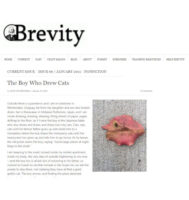The Necessity of Human Myth
Jesse Lee Kercheval’s “The Boy Who Drew Cats” speaks both to our current time and to the necessity of human myth. Confined to a house in Uruguay as her children face quarantine in Japan, Kercheval connects to the hero of a Japanese fable, the titular drawer of cats, in an attempt to find solace within herself through her own artistic ventures.
This connection to cultural myth—and Kercheval does cement her own tale very concretely to the modern as well as the mythical—inspires the author in its assertions of safety, balance, and a sense of stability. The myth helps her recapture her own love of art and facilitates a return to the page where flowers transform into felines. Kercheval does not uphold the myth as a perfect guideline, either—she comments upon it, accepting the good she sees there while acknowledging elements she appears to dislike.
But her inclusion of the fable also speaks to the wider purpose of human myth—as a necessity of the imagination to allow us to “visit” faraway places and to inspire. Kercheval places both within the story to generate trust that the world will get better, as well as trust in her own abilities.
“The Boy Who Drew Cats” by Jesse Lee Kercheval. Brevity, January 2021.
Reviewer bio: Adrian Thomson is a graduate student at Utah State University, currently working toward his MS by way of a thesis in poetry.





